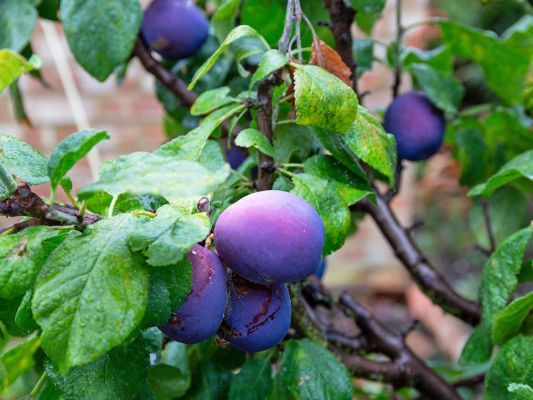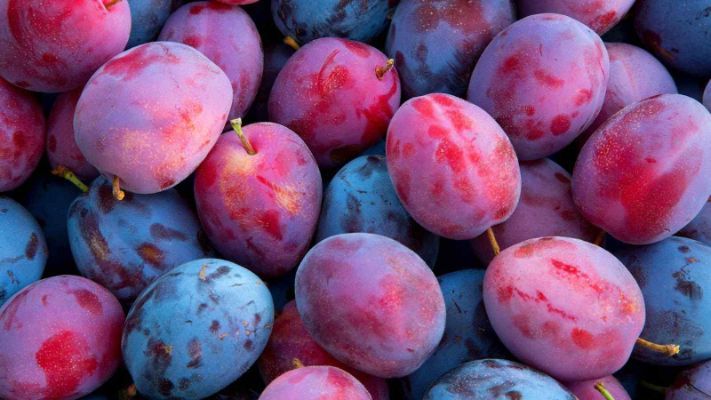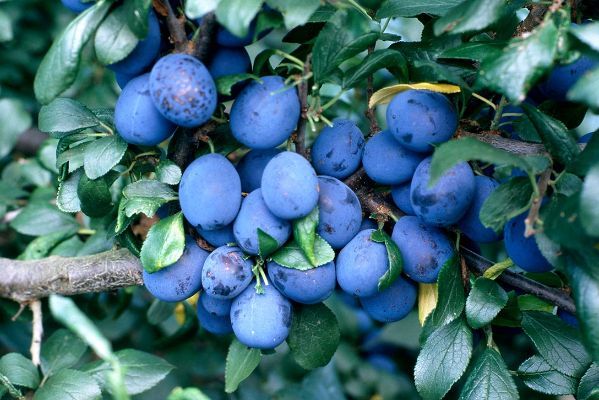It is easy to get confused because they are almost similar and belong to the same family. But the major differences exist less in their taste but more in shape - oblong in damsons and round in plums. You can also find clear distinctions in size, historical roots, and growth.

The size of damson fruit is smaller than plums, but both have deep blue skin, are bitter, and are more delicious when cooked. You can easily pick damsons from the pit, which makes it the best snack during the Autumn walks. So if you find plums hanging on trees, it will be good to know if they are damsons or real plums.
Here is everything you will need to understand the similarities and differences between plums and damsons.
What Is The Difference Between Plums And Damsons?
Damson (Prunus instititia) is the subspecies of the Plum tree (Prunus domestica), making them related closely. But this has nothing to do with the existing differences between the two.
Physical Appearance
Considering the size and shape, you can notice clear differences.
- The plum fruit has a diameter of up to 7 cm, while damsons are smaller, up to 3 cm.
- The shape of plums is approximately round, and damsons are oblong or elongated.
- Plums get different colors during the ripening stage, from yellow to blue-black. But damson can easily be identified by its black, blue color.
- You will see various flower colors on plum trees ranging from white to pink and purple, while damson trees have white colored flowers.
Growth Pattern
- Plums require six years from seedling to turn into full-grown fruit-bearing trees.
- In contrast, the damsons take much longer to grow. It takes fifteen years to grow from seed to a tree with fruits.
Historical Background
- Plums are not so old but were first discovered around 2000 years ago. However, there is a huge variety of plums that are older and found all across the world. Most species are located in China, Europe, and Japan. The European kinds of plums are smaller and oval. They are also known as Self-fruiting plums. The Japanese plums are fat and red, most found in warmer areas.
- There is a quite long history of around 10,000 years of damsons which were first discovered in Syria and then spread to other regions, including the West. Damsons are also self-pollinating plants. English damson plum has some similar characteristics to the European plum.
How to Identify Plums?

You need to be more careful when identifying plums, as they can easily be mistaken for different other plums. There are wide varieties of plums with different colors, such as yellow, red, purple, and black. So noticing the color can help differentiate plums from damsons.
Plums grow on trees that grow well in fully drained soil where the sunlight is abundant for eight or more hours. These areas provide the most suitable conditions for growth.
The color of unripe plums is usually green but changes over time. After some months, when the tree starts to bloom with flowers, the color of the fruit also changes. With ripening, the hard texture transforms into softer skin. Plum takes enough time to ripen, but it starts to overripe right after two weeks and falls off the tree.
You will find plenty of plums on the ground when you walk around their trees in Summer and Autumn. You can also pick the plums before they become overripe and fall.
How to Identify Damsons?

Due to their unique shape, damsons are easy to recognize. They are egg-like fruits surrounded by dense green foliage with toothed edges. The damson skin is blue-black, but the inside is yellowish.
The flesh of damsons is also considered clingstone due to stick adherence to the stone. You can make jams and gin with juicy flesh, which is mouth-watering.
The fruit size is 3 cm smaller than the plum and has a unique taste. They taste much better once they are fully ripe. The bitter taste converts into sweet and makes the damson a perfect snack.
You can use damsons to make dishes such as pies, cobblers, and salads and add them to other kitchen dishes.
How Do You Tell A Plum From A Damson?
Though there are many similarities between plums and damsons, the differences are also obvious to avoid confusion. Notice the size when you look at plum or damson for the first time. The size of the plum is greater than damsons but compared to other berries; damson is bigger.
Only two major types of damson - black and white- are quite common in Syria and the West. However, plums have wide varieties that are found all around the globe with color and taste variations.
Estimating their different harvesting periods, you can also know which one is plum or damson. Damsons are usually harvested between August and October, while Plums are picked between July and September.
The Bottom Line
Summarizing the difference between plums and damsons, you will see distinctive characteristics. These characteristics usually range from size to color, shape, taste, and origin. But both taste delicious and are popular for making jams.
We hope this comparison will help you understand plums and damsons better to avoid mistaking one for another.






